ACARA has been held for 7years . Its record was brosdcasted on Japanese TV and also has published as official book.
Every countries participated in ACARA are informing them in website or SNS like face book.
Domestic contests for ACARA has been also published book like in China and informed in SNS or website in each country.
2nd ACARA
Venue : ASJ UMEDA CELL
Sponsorship : ARCHITECTS STUDIO JAPAN (ASJ)
Broadcasting Station: BS12
Date: November, 2013
ARTICLE on ACARA (written by Dr. LEE, YOUNGIL)
1. In pursuit of modernity and principle of Asian architecture through the Asian Contest of the Architectural Rookie's Award
2. Establishing a Standard for Architectural Education in Asia.
1.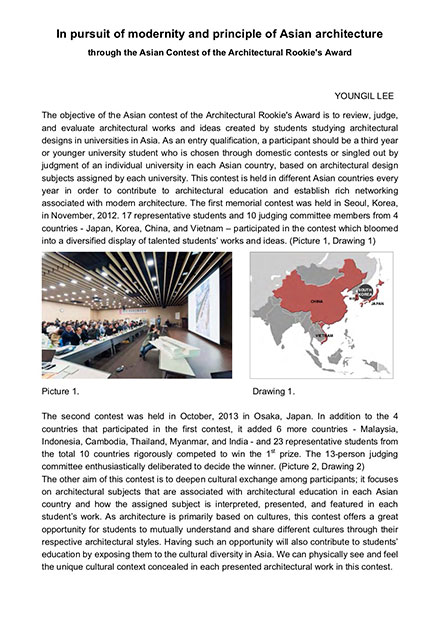 2.
2.
YOUNGIL LEE (President of AUA)
When we think of modern Asia, the one of the main theme will be the ‘modernization’ which has determined how Asia should be done and has influenced on the creative field of architecture, art etc.
The ‘modernization’ led by Western countries is to be refined as streamlining of the system and will be classified into the 4parts of the economy, politics, society, culture. Asian countries have accepted the Western modernization and have proceeded depending on their own situation. The conflict with tradition during the process of the modernization is common issue.
Especially, the architecture related with culture is no exception.
The movement of modernism, which had started from Western country at the beginning of 20th century, has spread throughout Asian country, and its ideas and concepts have been underlying Asian architecture. After we accepted western modernism, Asian architects have designed hesitating and wavering under a contradictory situation between western modernism and Asian tradition.
AUA is going to systematize the Asian architecture by classifying and summarizing with new viewpoint and is going to indicate the direction of Asian architecture sharing those academic accumulation with Asian country.
We will make a presentation on the Asian architecture selected in each country with following criteria. We divide architecture into 3 categories.
❶ Traditional architecture
・Architecture showing features for the ideas or reflecting the entire culture
・Architecture expressing the relationship with nature
・Architecture being reinterpreted or quoted in contemporary design
・Architecture being the object of controversy concerning tradition
❷ Western architecture
・Architecture designed by new program which was brought with modernization
(Ex. Station, bank, department store, courthouse and so on)
・Architecture built in semi-foreign style
❸ Contemporary architecture
・Architecture designed by architects who studied or worked in western country
・Architecture being the object of controversy concerning tradition
・Architecture being anti-western architecture
・Architecture expressing well with original method between western architecture and traditional architecture
・Architecture being positioned in the flow of world architecture
(Ex. Critical regionalism)
・Architecture which has influenced in architectural education
JAPANESE ARCHITECTURE
KOREAN ARCHITECTURE
TAIWANESE ARCHITECTURE
VIETNAMESE ARCHITECTURE
・ TAIAN (Tea House) / 16 Century (LEE)
・ KATSURA IMPERIAL VILLA / 17 Century (DAN)
・ ISE SHRINE / (YONEDA)
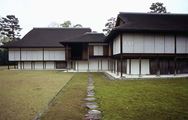
Katsura Imperial Villa
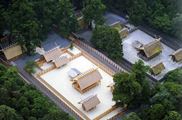
Ise Shrine

Taian (Tea House)
COMMENTS ON ASIAN ARCHITECTURE (Japan)
TAIAN is teahouse which designed by Sen no Rikyu, tea master. This teahouse is minimized space with only two-tatami mat. In that time teahouse innovated the space in Japanese architecture. The abstract senses which characterized the teahouse, that is, the space of ultimacy, simple material, honest structure, flexibility of expression have influenced Japanese architecture. The spirit of teahouse has inherited Tadao Ando too.
Written by YOUNGIL LEE
Katsura Imperial Villa, located in the north-west suburb of Kyoto near Katsura river, was designed as a retreat for imperial family by Prince Katsura and his son and was constructed from 1615 to 1662. In those era, the power of the emperor and the imperial family was restricted under surveillance of the military kingdoms of Tokugawa shogunate which founded it's capital in Edo. For the poor prince and his son, it was the only joy to dream of imperial prosperous time in the past, by admiring the beauty of the moon and the garden. The garden of the villa is centered by a pond formed by the water from Katsura river and around it's stroll garden were three villas as well as several teahouses. Katsura Imperial Villa, conceived by loving the beauty of both garden and architecture reflects the serenity of the solitary human soul, free of ostentation of the power nor expression of the belief of particular religion.
Written by NORIHIKO DAN
Ise Shrine
It is a shrine that worships an ancestor deity of the imperial family. it is positioned as the top of the entire shrine in Japan. It is the "Yuiitsu Shinmei zukuri" that conveys Japanese ancient wooden architectural style to the present age, it is a simple straight-line architecture using Japanese cypress unprocessed trees. Features such as gable, a thatched roof, a high floor, a entrance on the roof's ridge side follow the form of the old granary. Every twenty years it will be rebuilt in the same form on the adjacent site ("Shikinen Sengu”). It reflects the Shinto-specific time concept that the present is centered in eternity ("Nakaima") with the circulating time concept of tradition.
Written by AKIRA YONEDA
・Osaka City Central Hall (SHINICHIRO OKADA) /1918 (LEE)
・Tokyo Station (KINGO TATSUNO) /1914 (DAN)
・Okada House (SUTEMI HORIGUCHI) /1933 (YONEDA)
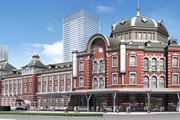
Tokyo Station

Osaka City Central Hall
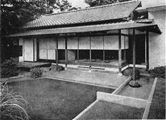
Okada House
OSAKA CITY CENTRAL PUBLIC HALL is a hall for the activity of culture, art, society, and was built by the donator who visited public building in America and impressed. This building is designed by OKADA who is a professor architect. He manipulated the historic form regardless of the Japanese and Western style. This building was also designed focusing on classical western style which is orderly with symmetrical facade. In the other works he used also frequently traditional style of Japanese and Western.
Written by YOUNGIL LEE
TOKYO STATION
In 1868, Japan ended 300 years' national isolation and started to accept western civilization in all the field. Josiah Conder, a British architect was invited to Tokyo university for the education of architecture. Kingo Tatsuno was the first promising graduate under Conder, and later became the architect of Tokyo Central Station built in 1914. Although for his age, westernization was almost the same meaning of modernization, he had to revise western technology by combining it with traditional Japanese ways for anti-earthquake purposes. The station was built on the building foundation of 1.2m concrete slab placed on top of 10000 pine tree piles driven into the ground to stabilize it. After Kingo Tatsuno passed away in 1919, Great Kanto Earthquake happened in 1923. Since the station was not damaged at all by the earthquake, Tokyo Central Station truly proved itself a monument of Japan's modernization.
Written by NORIHIKO DAN
Okada House
Since the Meiji Restoration, modernization of Japan was nothing but westernization. Until Japanese elite architects educated at the Imperial University began to make Western style architecture as a symbol of modernization, a pseudo Western style architecture was made by imitation from the observation of traditional carpenters. However, when modern architecture is created in the West, divergence from traditional Japanese architecture will be acutely aware. Okada House is an example showing such division and the garden barely holds the two together. Linearly evolving time concept peculiar to modernity and time concept of returning to the loop of tradition are juxtaposed.
Written by AKIRA YONEDA
・ TIME’S (TADAO ANDO) /1984 LEE
・ Yoyogi National Stadium First Gymnasium (KENZO TANGE) / 1964 YONEDA
・ Nakagin Capsule Tower (KISHO KUROKAWA) 1972 (DAN)
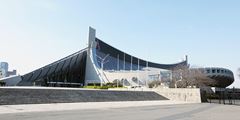
Yoyogi National Stadium

Nakagin Capsule

TIME'S
TIME'S
Tadao Ando has expressed the essences of Japanese traditional spirit and culture using western geometry in his architecture. It should be Asian architecture we could not see in western country. He shows how to design Asian architecture and shows one of the way which Asian architecture aim for. When Kenneth Frampton explained on the ‘critical regionalism’ he referred to Tadao Ando as a proficient architect. In the 1970s architecture tended to require contextualism which emphasized the spatial context. Time’s is the representative work matched the trend. Tadao Ando suggested what the architecture along a river should be through Time’s.
Written by YOUNGIL LEE
Nakagin Capsule Tower Building
This building, designed by Kisho Kurokawa, is one of a few masterpiece to represent Metabolism. In 1959 , Kisho Kurokawa showed a post-war new vision ''From the age of Machine to the age of Life'' and a manifesto of Metabolism with Fumihiko Maki and Kiyonori Kikutake. After the world war Ⅱ, most of the major Japanese cities were being reconstructed out of the burnt field and showed rapid population growth. On the contrary, most of the Euro-American cities except in Germany maintained their stable growth based on unchanged pre-war urban design policy of machine age. Kisho Kurokawa's idea came from the high speed growth of non-western city of diversity. Thus this building is a strong message casted toward rising cities of symbiotic Asia.
Written by NORIHIKO DAN
Yoyogi Gymnasium
Taking over the problem consciousness of Horiguchi, Tange tried to integrate the division of modern architecture and traditional architecture by the creation of tectonic in the non-Western context of Japan. Hybridity which applied hanging structure to concrete building, out of the structural equilibrium concept in modern architecture, shows the antagonistic state of departure and anchoring from the earth, that is, tradition as an existing context.
On the other hand, duality of human scale and urban scale is given, which keeps buildings and cities continuous. Following the architectural concept since ancient Greece that the binary conflicting term "2" in every part will be a wholeness "1 " with degrees of freedom, at every moment the whole based on such architectural concept is formed as an architectural space.
Written by AKIRA YONEDA
・ BUSEOKSA TEMPLE / 676
・ JONGMYO / 1396
・ BYEONGSAN SEOWON / 1572
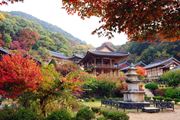
BUSEOKSA TEMPLE
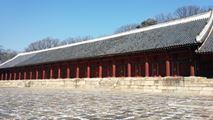
JONGMYO (main hall)

BYEONGSAN SEOWON
COMMENTS ON ASIAN ARCHITECTURE (Korea)
BUSEOKSA TEMPLE is a Buddhist temple located on a steep mountain, founded by the prominent scholar-monk Uisang in 676, . Buseoksa means "Temple of the Floating Stone" and is listed as UNESCO World Heritage in 2018. It is said that this is one of the representative work which expresses a feature of traditional architecture in Korea. The architectural characteristics is to harmonize building and nature as the essence of architecture. Korean architects learn from Buseoksa which arranges buildings in a manner which made the maximization of the adjoining land possible rather than digging and turning inclined land into a plain.
Written by YOUNGIL LEE
BYEONGSAN SEOWON (Local School)
This Seowon (a local private school) was located in the other place but was moved to present location in 1572. In Korea there were so many Seoweon, Seodang for teaching local Confucianists since Goryeo Age. When they select the site, the location was focusing on the relationship with nature. As a result, architecture is always contacting with nature and is going to be embodied. The concept of <inner part> (AN in Korean, OKU奥 in Japanese) came out gradually from the arrangement of buildings, and a special sense of space occurs in the approach to the building. This is common in Asian country.
Written by YOUNGIL LEE
JONGMYO
JONGMYO is a royal shrine dedicated to the performance of ancestral rites for the deceased kings and queens of the Joseon Dynasty, and is designated by UNESCO as world cultural assets in 1995. This is being reserched by Korean architects because of having universal value in architecture. The simple and elegant buildings of this shrine is made up of Jeongjeon (the main hall), Yeongnyeongjeon (the hall of eternal peace) and auxiliary buildings. The main hall is an outstanding example of traditional Korean architecture with grandness and temperance.
Written by YOUNGIL LEE
・ HWASHIN DEPARTMENT STORE (PARK GIL-RYONG) /1931 (LEE)
・ POSUNG COLLEGE/ (PARK DONG-JIN) /1932 (JEONG)
・ CITIZEN’S HALL (LEE CHEON-SEUNG) /1956 (LEE)
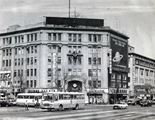
Hwashin Department Store
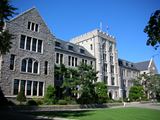
Posung Colleage
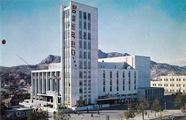
Citizen's Hall
Hwashin Department Store / Park Gil-Ryong / 1931
PARK GIL-RYONG is the first modern architect who opened architectural designoffice in Korea after modernization. HWASHIN DEPARTMENT STORE is his most important work, and is the building symbolized the city of Seoul at that time. There were gap in perception between the theory and reality for the architects in the colonial period. They tended to adopt the elements of western modern architecture, which are simple form and ornamental removal, functional decomposition, emphasizing the horizontal, flat roof. But it was based on the surface knowledge derived from Japanese architecture magazine. They had not actually seen the western modern architecture. Most of works were architecture in transition.
Written by YOUNGIL LEE
・ SPACE (KIM SWOOGEUN) / 1977
・ FRENCH EMBASSY IN KOREA (KIM JOONGUP) 1961
・ JEOLDUSAN MARTYRS’ SHRINE (LEE HUITAE) /1967

SPACE

FRENCH EMBASSY IN KOREA

JEOLDUSAN MARTYRS' SHRINE
SPACE / Kim Swoo Geun / 1977
He has been called a genius architect in Korea. He was an architect with great powers and abilities and made great achievement in Korean architecture that much. Kim designed over 200 projects inside and outside of South Korea during his lifetime.
The ‘SPACE Group building’ is one of his representative works with his design office and gallery, small theater. In this building he published ‘space’ magazine which contributes to recording and distributing Korean culture, and tried to integrate architecture and other genres of artistic expression.
Written by YOUNGIL LEE
French Embassy in Korea / Kim Joong Up / 1961
Kim Joong Up is professor architect and the only Korean who worked in Le Corbusier's atelier from 1952 to 1955. He learned the architectural language from the Corbusier office during the 1950s and 1960s. But he struggled to find new ways to incorporate tradition. We can see it in the French Embassy building which is his representative work. This building took the curved eaves of hanok (Korean traditional house)as a motif.
Written by YOUNGIL LEE
Jeoldusan Martyrs' Shrine / Lee Hui Tae / 1967
Jeoldusan Martyrs' Shrine is located on the hill where up to 2000 Korean Catholics were executed in 1866. Lee Hui Tae was selected in a design competition for the Jeoldusan martyrs' shrine and museum in 1966. He located the chamber which stores the remains of the martyrs at the top of the hill of Jeoldusan and designed an altar above this chamber. This building was a masterpiece of a new interpretation of traditional Korean architecture and its realization in terms of modern building construction system.
Written by YOUNGIL LEE
・ Yami (Tao) House in Lanyu Island
・ Shop House in Dihua Street, Taipei
・ Hakkanese Courtyard House in Longtan, Taoyuan
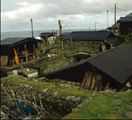
Yami (Tao) House
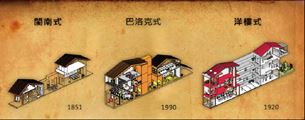
Shop House in Dihu a Street, 1851-1920

Hakkanese Courtyard House
・ Post-60 mid / low-rise housing in Taipei
・ Campus & Church Complex in Tunghai University
・ Church of Kung-Tung
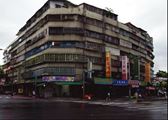
Post-60 mid / low-rise housing in Taipei

Campus & Church Complex in Tunghai University
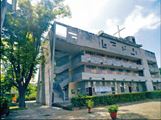
Church of Kung-Tung
Campus & Church Complex in Tunghai University
Tunghai University was founded by Methodist missionaries in 1955. As a first private and modern university in Taiwan, I.M.Pei and other young architects designed the campus as an ideal utopia which combined traditional Chinese housing, the zigzag layout of Japanese Katsura palace, and by the modern construction detail and technology.
Written by Ming Hsien Wang
・ TAIPEI 101
・ Qinhe Tribe refuge
・ Luodong Culture Factory

TAIPEI 101
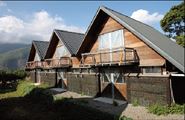
Qinhe Tribe refuge

Luodong Culture Factory
TAIPEI 101 / Wang Chung-Ping & Lee Zu-Yuan
As the most popular building in Taiwan, TAIPEI 101 (height 509m) was once the most tallest building in the world from 2004 to 2010. The skyscraper can be seen all around Taipei area, which showed the high level of construction in Taiwan. Not like in China, TAIPEI 101 was designed by famous Taiwanese architect Lee Zu-Yuan, and the design motif was from the symbol and curve of traditional art works.
Written by Ming Hsien Wang
Qinhe Tribe refuge / Hsieh Ying-Chun
Architect Hiseh Ying-Chun is committed to the development of simple-built system by steel channels that allow typhoon and earthquake victims to participate in the construction of the refuge. When building these refuge, Ar. Hiseh paid attention on architectural aesthetics and the use of local materials to figure out Taiwanese light construction style.
Written by Ming Hsien Wang
Luodong Culture Factory / Huang Sheng-Yuan
Architect Huang Sheng-Yuan's design base is setting in Yilan county for many years. In his works, he thinks about the new relationship between architecture, land and people. Luodong Culture Factory is the most important work to show his ideal thought about people's living and activities under a huge roof cover.
Written by Ming Hsien Wang
・ Imperial City / 1805-1832
・ Tomb of the Marshal in Ba Chieu / 19C
・ Dinh Bang Communal House / 1700-1736

Imperial City
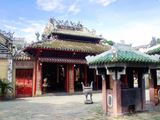
Tomb of the Marshal in Ba
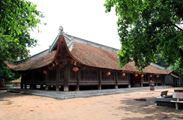
Dinh Bang Communal House
Dinh Bang Communal House
Bang Communal Hall is an architectural site full of national identity with unique carving and decoration. The house faces south with a lake, and the central gate was built with bricks in the shape of a lantern. At its two sides there are vaulted gates with fake roofs. Behind the gate is a large yard paved with stones. Although having the experience of the ups and downs of war and the passage of time, the worshiping pavilion retains its extreme beauty. Also called the "great palace", it was built on high ground and is circled by two green stone stairs that gives the palace an imposing look. The four roofs stretch in four directions and cover the verandas, with rising dragon shaped ends.
Written by Le Minh NGO
Imperial City, Hue / 1805-1832
This is Complex of Hue Monuments lies along the Perfume River in Hue City. The main enceinte, the Capital City, is square in plan, each side measuring 2,235 m. The Imperial City is surrounded by 4 walls with about 600m long each and 4 gates. That architectural system consists of Capital Citadel, Royal Citadel and Forbidden Citadel. For approximately 400 years, Hue has become a great landscape and architectural site. Hue has integrated material and spiritual values, which become its own unique special culture.
Written by Le Minh NGO
・ Thuy Ta Cafe & Restaurant / Vo Duc Dien & Nguyen Xuan Tung) /1937
・ Hanoi City Hall / Hanoi Government /19 century
・ Binh Tay Market / Guoyan /1928

Thuy Ta Cafe & Restaurant
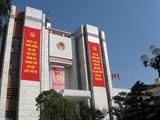
Hanoi City Hall

Binh Tay Market
Thuy Ta Cafe & Restaurant / Vo Duc Dien & Nguyen Xuan Tung / 1937
Situated on the banks of Hoan Kiem Lake, this is the ideal place to watch the The Huc Bridge, looking for fresh breeze from the lake brought back and looked down at the water ripples. According to Nguyen Van Uan: “Before building Thuy Ta here is Ngoc Ho. The owner is Ms. Thuoc, daughter of the official, talented people, smart customer. This place has been a place for young intellectuals, lawyers, pharmacists, artists.
Written by Le Minh NGO
・ General Library / Bui Quang Hanh & Nguyen huu Thien / 1968
・ Independence Palace / Ngo Vie Thu / 1962-6
・ Thong Nhat Hospital / Tran Dinh Quyen /1970-1

General Library

Independence Palace
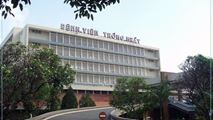
Thong Nhat Hospital
General Library / Bui Quang Hanh & Nguyen huu Thien /1968
After Reunification, the former South Vietnamese National Library was integrated into the national library system of the Socialist Republic of Viet Nam. In 1976 it was renamed the National Library II (Thư viện Quốc gia II, Thành Phố Hồ Chí Minh), but two years later it became the Hồ Chí Minh City General Sciences Library (Thư viện Khoa học Tổng hợp, Thành Phố Hồ Chí Minh), the name by which it is known today.
Written by Le Minh NGO
Independence Palace / Ngo Viet Thu / 1968
Architect Ngo Viet Thu, the first Vietnamese recipient of the Grand Prix de Rome, which he won in 1955, and the first Asian architect to become an Honorary Fellow of the American Institute of Architects, in 1962, was the brains behind the modern- day rendition of the palace. In an attempt to fuse both modern architecture and its traditional Asian variety, Thu incorporated auspicious Chinese characters into the building’s layout and design. As a result, the palace’s shape reflects different characters when viewed from different angles. Independence Palace mimics the form of the Chinese character jí (吉), which represents good luck. Facing forward, there are another five or so Chinese characters embodied in the building’s façade.
Written by Le Minh NGO
Thong Nhat Hospital / Tran Dinh Quyen / 1971
Thong Nhat Hospital was established after the Southern Liberation in 1975 with Prof. Nguyen Thien Thanh being the first Director of the hospital. Over the past 40 years, the hospital has been expanded from 450 beds and 25 departments to 1,100 beds, 40 departments and more than 1,200 medical workers.
Written by Le Minh NGO